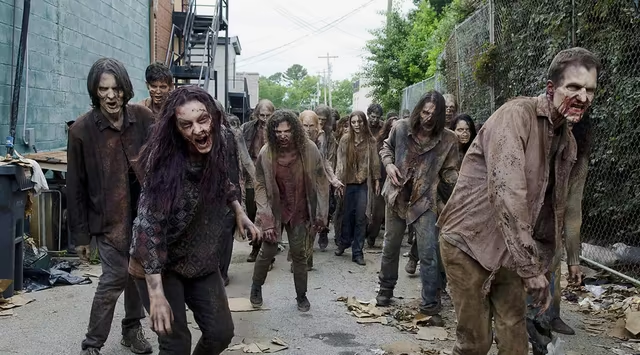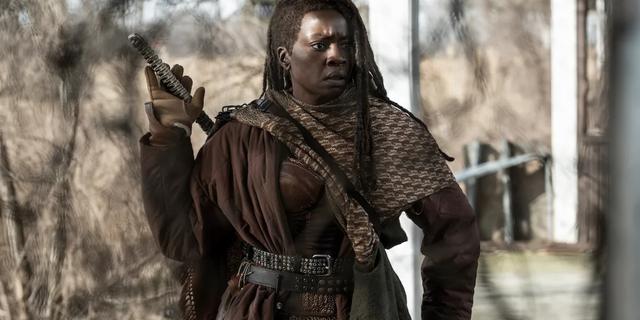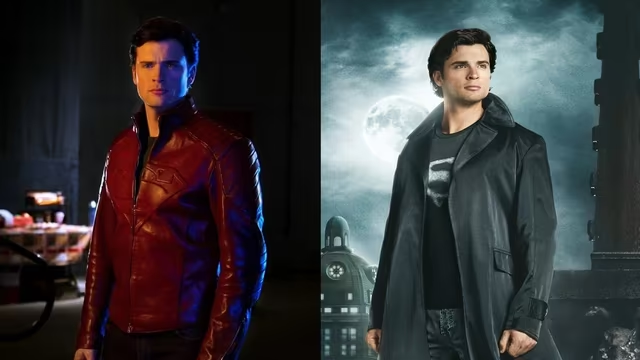If you click on a link and make a purchase we may receive a small commission. Read our editorial policy.
The funniest character deaths in television history
It hurts to say goodbye when your sides are in stitches.

Popverse's top stories
- How Critical Role’s fan community helps Matthew Mercer remember a decade of storytelling
- Inside the "gutsy decision" by Marvel to kill the Ultimate Marvel imprint, and why they were worried continuing it would be wrong
- Every Final Fantasy game is different, but these are the things that always stay the same [Gamify My Life]
To appease the Nielsen gods, sometimes a ritual sacrifice is needed. The most reliable ways to juice the ratings for a TV show have always been weddings and funerals. And if you’re not in a position to marry anyone off… it’s time to start looking at who you can afford to cut from the roster. Mostly, a high-profile television death is played for drama, generating waves of synthetic grief felt by a nation of viewers, or cheers for the downfall of a hated figure. But television allows for an aspect of death rarely acknowledged outside of fiction: as with all aspects of life, sometimes death itself can be funny. Some of the greatest shows of all time have taken advantage of this, and here’s a few to prove many of the ways you can thread that needle.
(Not on the list: Kenny from South Park. Sorry, Kenny. The bit was never that funny.)
Eddie LeBec, Cheers

One of the funniest ways a character has ever been written off a show is the case of hockey player turned ice showman Eddie LeBec, recurring Cheers guest star and love interest, and later husband, to the irascible Cheers waitress Carla Tortelli. In the alleged fallout of a legendary behind-the-scenes dispute, Eddie was written off the show in the season 7 episode 'Death Takes a Holiday on Ice' when he’s said to have heroically rescued a fellow cast member from a zamboni accident… only for Carla to learn, at Eddie’s funeral, that he had maintained a secret second family the entire time that he and Carla were together. This hysterically caustic turn on a fan-favorite character was divisive for the time, but stands out as one of the most memorable turns on this genre-defining sitcom to this day.
The Judge, Buffy the Vampire Slayer

Joss Whedon’s legacy is a complicated one to say the least, but it’s one that he built on the backs of smart, subversive writing on television series like Firefly and Buffy the Vampire Slayer. In addition to the Whedon-esque dialogue which would change the way movies were written, the action sequences themselves often defied expectations, flipping the way viewers typically expect a confrontation between hero and villain to go from episode to episode. There’s no stronger example of this than in the season two antagonist of “The Judge,” a demon meant to eradicate humanity and whom no weapon forged could harm. On paper, an unwinnable fight. Until you account for the fact that when that paper was written, mankind had yet to invent the bazooka. The Judge’s final bewildered words- “What’s that do?”- are written in the stars for the ages.
Aldous Leekie, Orphan Black

A close friend of mine lured me into watching Orphan Black as a showcase of the acting range of Tatiana Maslany, playing multiple increasingly complex clones of the same character who come to discover each other’s existence. What I didn’t know was that she was actually setting me up to watch one of the greatest death scenes of all time. Aldous Leekie, the sinister face of the shadowy 'Neolution' program, served as a primary antagonist manipulating the Maslany clones behind the scenes for its first two seasons until one of his agents, the doofy Donny Hendrix- husband to one of the clones placed to keep tabs on her, but otherwise generally inept - confronts the shadowy bioengineering kingpin during a rendezvous. Bringing a gun only to protect himself, an accidental misfire instantly kills one of the top figures in the entire evil operation. I’ve got to admit: it was absolutely worth the build-up.
Susan Ross, Seinfeld

Some may call it desperate. Some may call it the moment Seinfeld jumped the shark. But for our part, we can’t help but respect the sheer audacity of getting George Costanza out of his long-running engagement arc to NBC executive Susan Ross in the most pathetic way: by resorting to the cheapest brand of envelope glue, leaving Susan alone to lick all the wedding invitation envelopes closed herself, and die of glue poisoning. What really sells it is the way George, Jerry, Elaine and Kramer all uncomfortably slink away from the hospital, this wildly unlikely and deeply tragic turn simply being too much for them to handle. As the last episode of the series written by Larry David (excepting his return for the finale), it’s a moment of pitch-dark comedy which in retrospect sets the tone for David’s next long-running project, Curb Your Enthusiasm.
Frank Grimes, The Simpsons

Ah, Grimey. Whatever happened to him? A one episode character featured in the Season 8 Simpsons episode “Homer’s Enemy,” Frank Grimes’ brief but memorable residency in Springfield serves unintentionally as a capper on the entire classic era of the series. The hard-luck, hard-working Frank Grimes exists in stark contrast to the hapless Homer Simpson, whose many unlikely victories and accomplishments are tallied here for the first time to paint the portrait of a defiantly charmed life for the person who least deserves it. As the newest employee of the Springfield Nuclear Power Plant, Grimes completely loses his grasp on reality in his attempt to reconcile Homer Simpson’s existence when compared to his own, electrocuting himself while attempting to make a point about the consequence-free flights of fancy which govern Homer’s reality – an incident which would be just another day for Homer Simpson, but permanently fatal for Grimey. The episode serves as a yardstick to the abstraction that the series itself had undergone from its humble beginnings to its cartoonish present day of 1997. Considering all that would follow, maybe Frank Grimes was lucky he wouldn’t be around to see it.
Peter Gregory, Silicon Valley

Imagine you’re one of the writers of the series Silicon Valley in its early days. You’ve had a critically acclaimed first season. You’re the funniest show on HBO, with some of the most talented cast in the industry. What do you do when one of the stars suddenly dies? That’s exactly what the series had no choice but to address with the untimely passing of Christopher Evan Welch as Peter Gregory, the Steve Wozniak-like mentor to the show’s startup tech heroes. The often eccentric Peter is eulogized by his closest confidante, Monica Hall, who must inform everyone his firm was associated with, our heroes included, exactly how he passed. We’ll transcribe it here.
“He was in the Serengeti on safari, and he had just gone into his tent when a hippo wandered into the camp.”“He was attacked by a hippo?”
“No. I guess the hippo started to charge, and the guide grabbed his rifle, and shot at it, but… his aim was off. And…”“And he shot Peter Gregory by accident?”
“No. He missed. But I guess the sound of the gun startled Peter, who ran out of his tent and…”
"Ran right into the hippo?”
“No, the hippo was also startled by the noise, and had run off prior to Peter exiting his tent.”
“So what happened to Peter?”
“He… hadn’t run in a long time. Maybe ever. And… you know. He just… that was it.”
Steve Castle, Futurama

“My only regret is… that I have… boneitis.”If you’ve somehow never spoken this line aloud, then you’ve never seen Season 3 of Futurama. The ultimate expression of fatalistic hubris, Steve Castle was an uber-capitalist one-off Futurama character from Wall Street of the 1980s, cryogenically frozen until the 31st century until a cure could be found for “boneitis.” But so busy was Castle applying his 80s ethos to influence Fry and those around him that he forgot to get the cure for the disease he was frozen for. Deploy this to any comedy nerd, and they’ll know you’re talking about becoming the instrument of your own undoing.
Tanya McQuoid, The White Lotus

Jennifer Coolidge was such a presence to be reckoned with in the first season of The White Lotus anthology series that she alone would return to the main cast for its second season, set at another location in the White Lotus hotel franchise. With each season so far predicated on the early discovery of a body, their identity only revealed in the last episode, the last thing any viewer expected was for the series to go through the effort of bringing Coolidge back as the ludicrously wealthy, absent-minded Tanya just to kill her off. But that’s exactly what they did, in an absurd storyline which brought her into the inner circle of a queer Italian crime ring, giving us the immortal line: “These gays, they’re trying to murder me.” In the climactic Season 2 finale, the normally inept Tanya somehow dispatches an entire yacht of criminals on her own, only to whiff an attempted jump off the boat to safety and instantly die.
Ida Blankenship, Mad Men

Though her time on the show was short, Ida was one of my favorite characters in Mad Men. In opposition to the parade of beautiful women who graced Don Draper’s office, Ida was an elderly, fumbling secretary whose general purpose was to make Don’s life more complicated and uncomfortable – up until the day she’s discovered by Peggy, seated at her desk, completely dead. The reveal is such a shock that it comes all the way back around to being funny – but then, despite its dramatic trimmings, Mad Men was always a comedy at heart. You were an astronaut, Ida.
Follow Popverse for upcoming event coverage and news
Find out how we conduct our review by reading our review policy
Let Popverse be your tour guide through the wilderness of pop culture
Sign in and let us help you find your new favorite thing.
















Comments
Want to join the discussion? Please activate your account first.
Visit Reedpop ID if you need to resend the confirmation email.